When: Saturday 26 January, From 1 PM onwards. BBQ Dinner at 6 PM.
Where: Outer Limits Centre, Mt Spec Road
BYO Drinks & BBQ
FREE High Ropes, Climbing & Games
Dress Code: Aussie, Aussie, Aussie
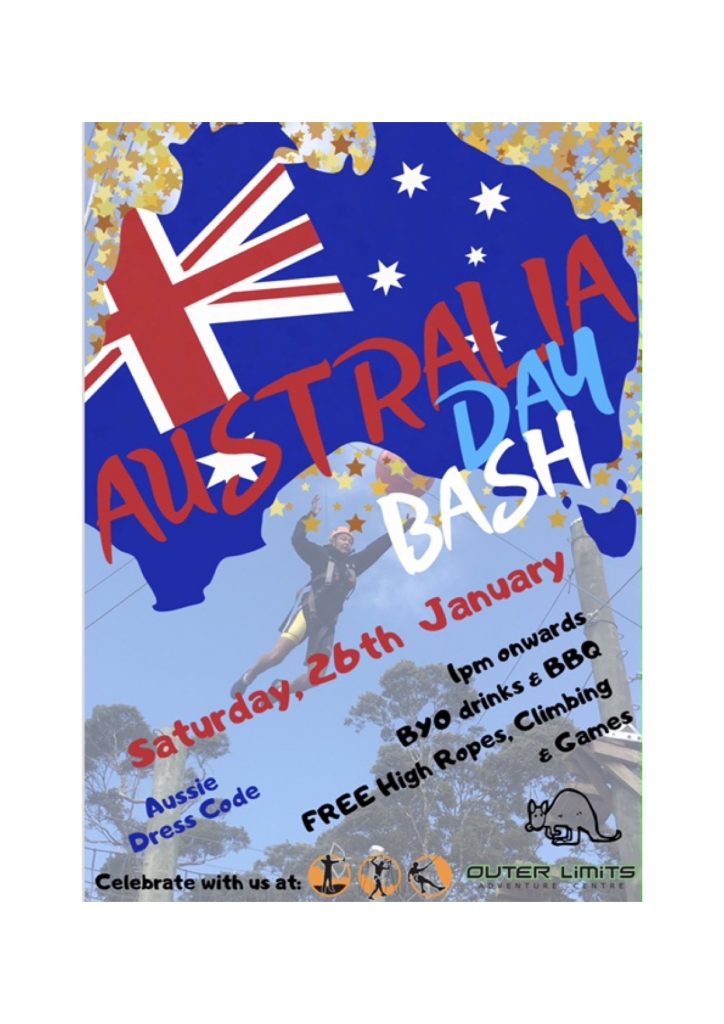
When: Saturday 26 January, From 1 PM onwards. BBQ Dinner at 6 PM.
Where: Outer Limits Centre, Mt Spec Road
BYO Drinks & BBQ
FREE High Ropes, Climbing & Games
Dress Code: Aussie, Aussie, Aussie

One of Paluma’s most popular and well-loved residents, Don Battersby will celebrate his 69th birthday this week. To mark the occasion, Colwyn Campbell hosted a birthday party for Don on Saturday night (19th January) at her residence. The house and verandas were bursting at the seams with the event well-attended by many of Don’s long-time friends and his Paluma family. As usual, there was food aplenty with an array of Indian-inspired dishes and other cuisine, as well as a tropical passionfruit birthday cake. There was good food, great company, many laughs and the usual warm community spirit that exists uniquely in our village of Paluma.
Happy Birthday Don from all your friends and family at Paluma!
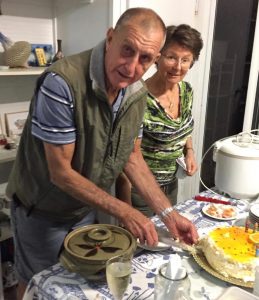
Walkers on the short ‘Paluma Rainforest Walk’ opposite the Community Hall last week came across a legless Paluma resident slowly heading home after a large Christmas feast in the village.
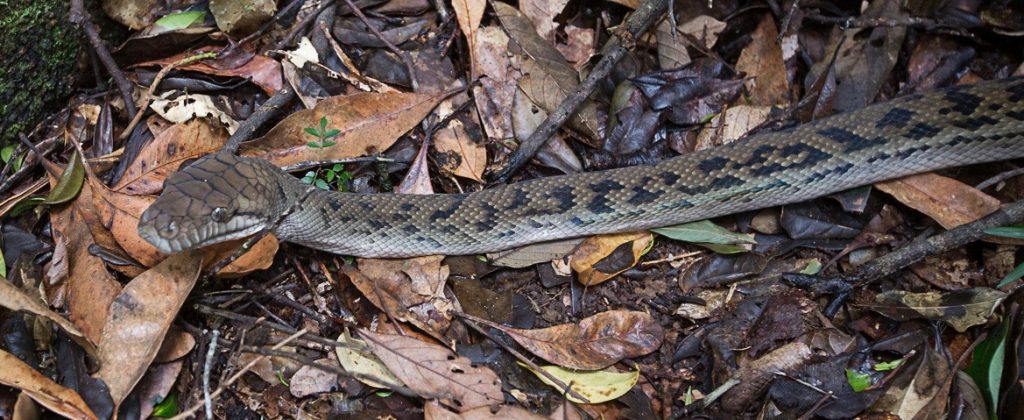
When this sizeable amethystine python (Morelia amethistina, aka scrub python) was first noticed the Saturday before Christmas not far from the start of the walking track (off Mount Spec Road) it had already finished Christmas dinner. By the size and shape of the bulge in its belly it seems most likely the festive feed was an unwary scrub turkey (Alectura lathami). It wasn’t until well after Christmas on the Thursday that the 3 metre-plus serpent slithered down the slope and stopped for a breather just beside the track.
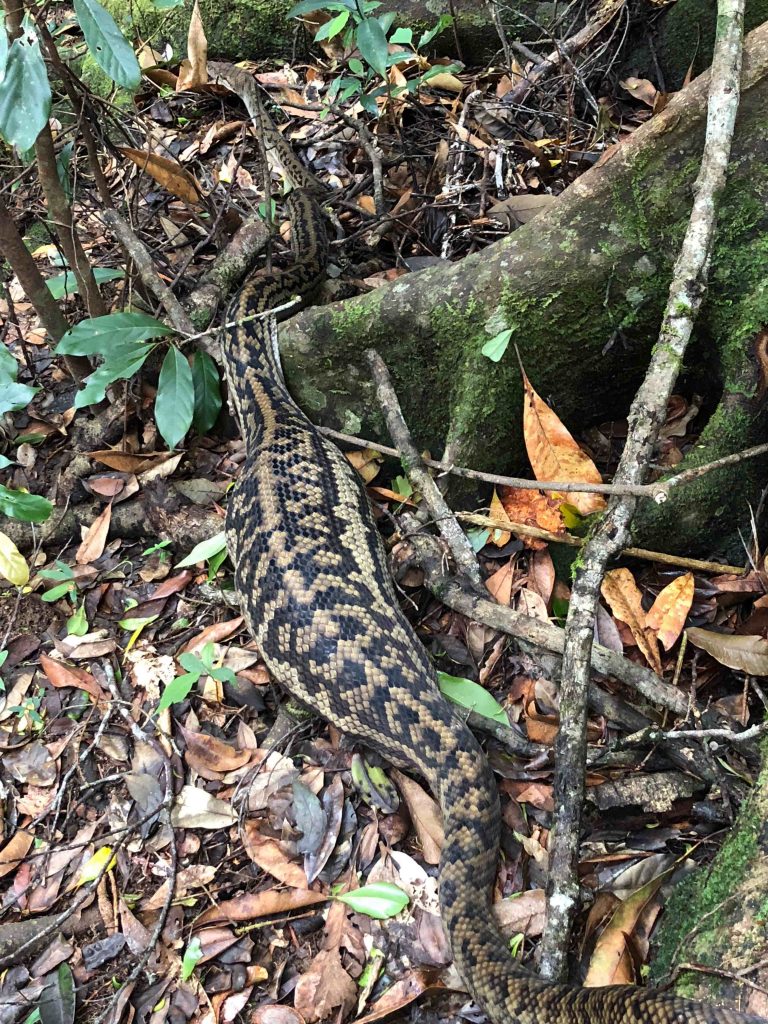

The amethystine python is one of the six largest snakes in the world, as measured either by length or weight, and is the largest native snake in Australia and Papua New Guinea. It can be found throughout Indonesia, Papua New Guinea and Australia. The largest known recorded specimen was 8.5 metres in length. The scrub python is non-venomous, but comes with with an awesome set of fangs and very quick reflexes.
It’s not unusual to find a scrub python stretched out across the road in and around the village of Paluma, enjoying the warmth of the bitumen and other times just on its way somewhere at its own slow pace. So motorists please take care!. If you can’t drive around, pull up and have a good look at one of the jungle’s most outstanding creatures while it crosses the road.
Text & Photos by Peter & Jan Cooke

Seasons Greetings
The Paluma & District Community Association (PDCA) Executive Committee would like to wish all Members and Paluma residents (past and present) a very happy, safe and enjoyable festive season.
We look forward to working with you in 2019 for the benefit of our special village in the mist at Paluma.
Warm Regards from Jamie Oliver, Wilfred Karnoll, Colwyn Campbell, Lynn Hyland, Michele Bird and Juanita Poletto.

It is time tribute was paid to the much maligned Brush Turkey, the scourge of Paluma gardeners. It is just as much a member of the local birdlife as the Riflebird, Catbird and Satin Bowerbird, and deserves to be acknowledged as such. Yet so often, visitors to Paluma do not give the turkey a second glance so intent are they in spotting the rarer birds. On the other hand, some have mistaken the turkey’s identity and proudly report having seen a cassowary!
In spite of the curses bestowed on the turkey as he or she rummages through the garden, uprooting precious plants and redistributing carefully laid mulch, I suspect most people hold a sneaking affection for them. I find them rather endearing. When I moved to Paluma, I inherited three who roosted in a tree in my back garden. They waited each day at the back steps for breakfast scraps calling with their funny grunting clucks as they followed me to the edge of the forest where I put their food scraps out. Turkeys still have breakfast with me and are usually close by when I work in the garden.
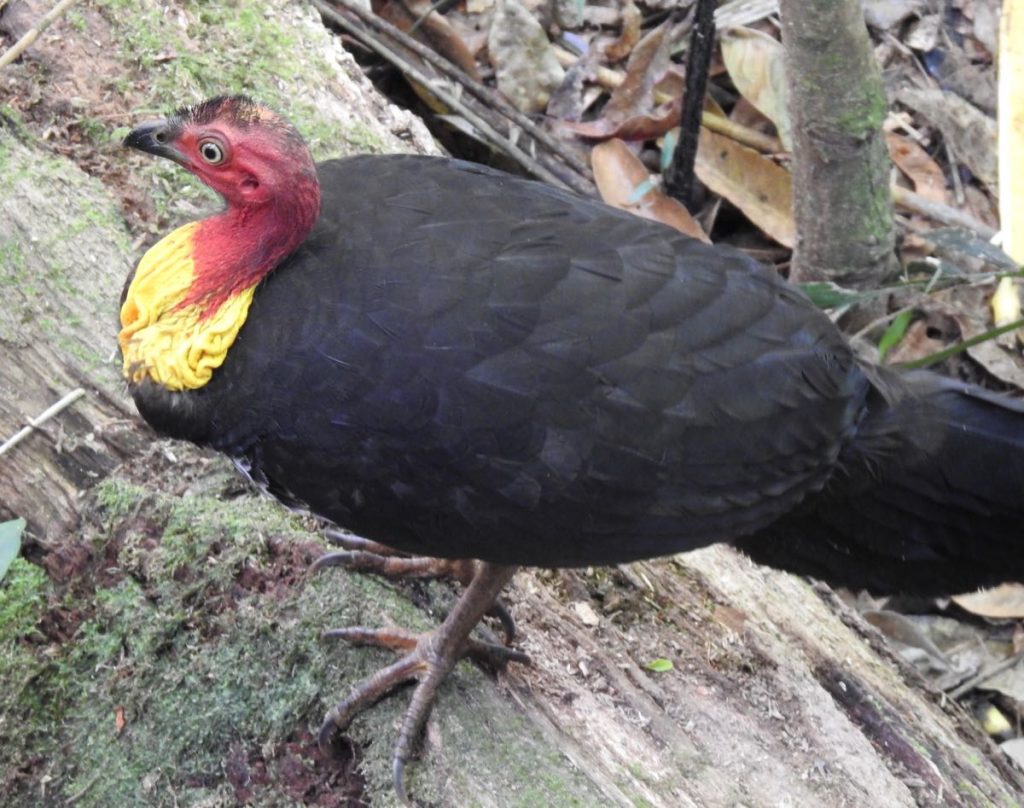
At present the male turkeys are still dressed in the magnificent courtship plumage which they donned during spring when they felt the first pangs of love in the air, with bright yellow wattles hanging in fat coils from their crimson necks. So take a moment to admire them as they strut their stuff through the village. They have been working tirelessly for many weeks, raking leaves, throwing aside sticks and twigs, to build nesting mounds which can cover an area of around two metres square and be up to a metre and a half high.
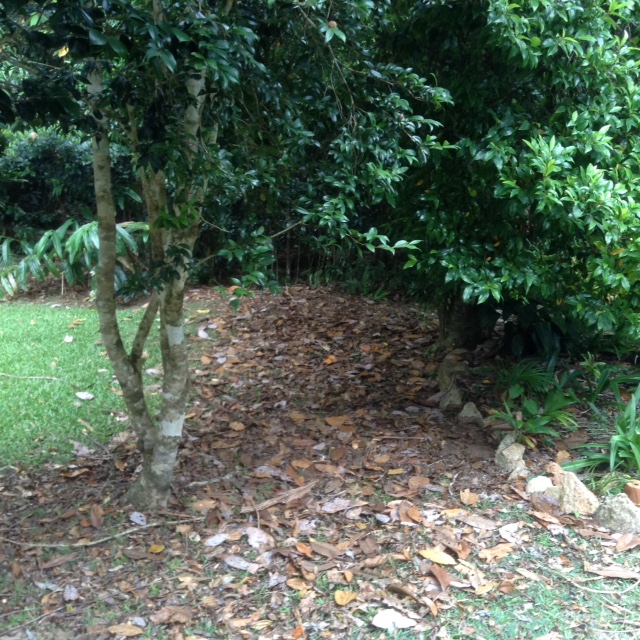
Their big feet, (Brush Turkeys are Megapodes – meaning ‘big feet’), are useful tools for raking leaves for their nesting mounds and for foraging for food amongst the leaf litter on the forest floor and in our gardens.

The mound completed, the male has to entice females to lay eggs in it; several hens will oblige – with eggs not necessarily fertilized by the builder of the mound. The hen’s job done, off she goes. She provides no parental care other than providing eggs with particularly rich yolk which can feed the chick after it has hatched. The male turkey will satisfy himself that the eggs are deeply buried in the mound.
The decomposition of the leaves and mulch with which the mounds are constructed provide the heat required to incubate the eggs. He keeps watch, turning the mulch to maintain a constant temperature until the chicks are ready to hatch, (after about 50 days), then off he will go, his job also done.
After the chick hatches it rests for several hours absorbing nutrients from the yolk reserve. During this time its plumage dries and its lungs fill with air. Then it has to work its way out of the mound, an effort that takes on average, 40 hours. It will rest frequently, making a small cavity around itself which allows it to breathe. Once out of the mound, always during daylight hours, the chick has to fend for itself, making its way quickly to the shelter of shrubbery or vine thickets before dark to avoid predators such as dingoes, owls, pythons, carnivorous marsupials and feral cats. The chicks know instinctively to feed on grubs and insects in the leaf litter.
New chicks with their fluffy brown feathers and weighing only about 150 grams, are seldom seen: partly because they gain black feathers at only a few weeks old, partly because they stay concealed within the forest until they are near adult size, (at around 8 months old), but mainly because so many of them do not survive the first few months, falling victim to predators. A hen can lay up to 24 eggs in a season but sadly, of every 200 eggs laid only one will reach adulthood.
So; Salute the Brush Turkey – a battler and survivor.
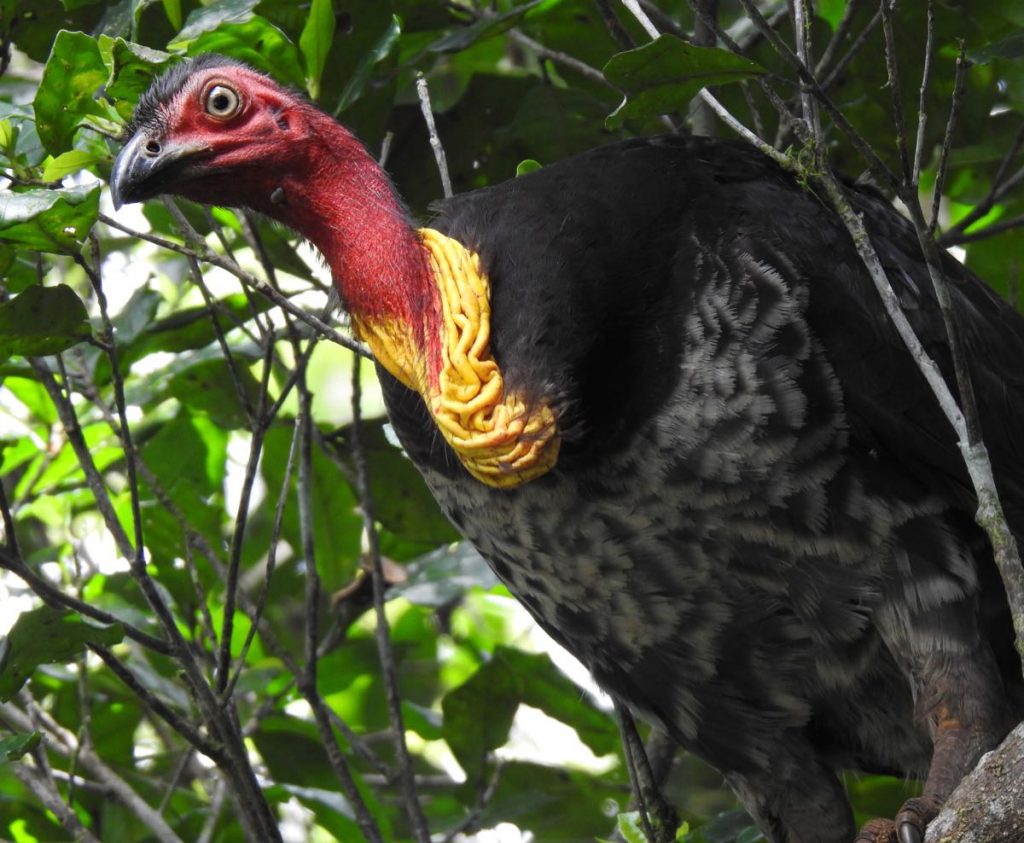
For more reading, an excellent article on the Brush Turkey written by Dr Ann Goth may be found in Nature Australia (Spring 2005, Volume 28, Number 6).
Article by Colwyn Campbell & Turkey Photos by Michele Bird
Last Saturday night (8 December) the annual Tropical Xmas BBQ was held at the Community Hall to close out the Paluma Social calendar for 2018. Up to 20 residents attended the event, with a few people coming and going over the course of the evening.
 A sumptuous feast consisting of BBQ meats and an array of salads and sweets was enjoyed by all. The ‘BBQ-er’ for the evening was Ross Hyne, closely supervised by ‘Mr. BBQ’ himself, Don Battersby. As usual, the Bar and Beverages were expertly dispensed by Les Hyland.
A sumptuous feast consisting of BBQ meats and an array of salads and sweets was enjoyed by all. The ‘BBQ-er’ for the evening was Ross Hyne, closely supervised by ‘Mr. BBQ’ himself, Don Battersby. As usual, the Bar and Beverages were expertly dispensed by Les Hyland.
The ‘dish of the night’ was awarded to Jennie Robinson for her very special and unique recipe for ‘sweet but salty’ berry dessert cake! The encouragement award goes to Jim for his very special ‘do-it-yourself cucumber and egg salad’.
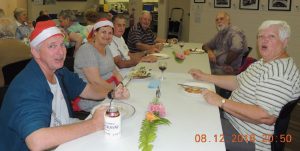
It was great to see many people embracing the ‘Tropical’ theme with their colourful shirts and other attire. We were lucky enough to have two of Santa’s Elves attend as well (Ross & Sonya).
As with all Paluma Social Events, many of us ate too much food, drank a little too much wine and laughed a lot! A happy and fun-filled Paluma time was enjoyed by all. Merry Xmas!
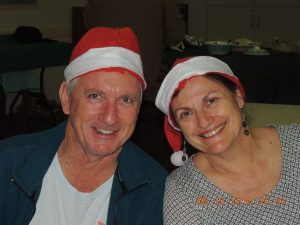
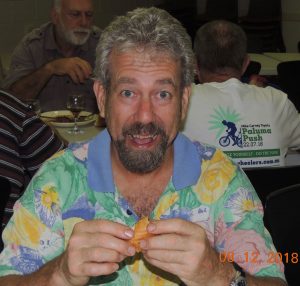
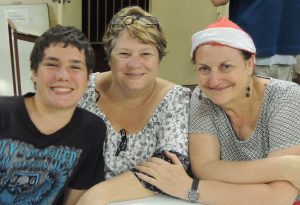

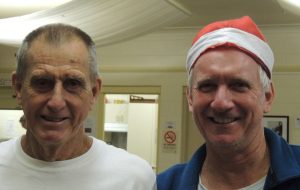
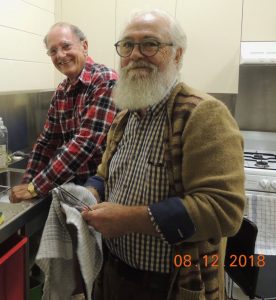
Rainforest Tree of the Month (December) – Glochidion hylandii
Around the world there are up to 300 species of Glochidion. In the rainforests of tropical Queensland there are 12 with Glochidion hylandii being the one most usually seen in and around Paluma. It is commonly known as Hyland’s Buttonwood and Pinflower Tree, which can be quite confusing as several other species, very similar in appearance, are also popularly named Pinflower, Buttonwood and Cheese Tree, the last presumably because the fruit is reminiscent of a round cheese.
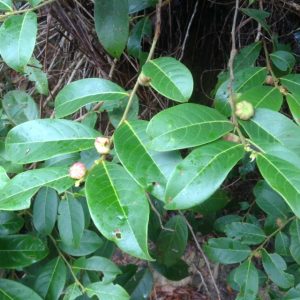 Glochidion hylandii is a shrub or small tree growing to a height of up to 12 metres, usually to be found on the edges of rainforests or in revegetation areas as a pioneer tree. The leaves are simple, elliptic and between 30 and 150 mm long with clearly defined veins. Upper surfaces are smooth, or sparsely covered with fine hair while the undersurface is slightly waxy with fine brown hairs. Flowers, growing in the leaf axils are inconspicuous, being only 2 or 3 mm with 6 green sepals and no petals.
Glochidion hylandii is a shrub or small tree growing to a height of up to 12 metres, usually to be found on the edges of rainforests or in revegetation areas as a pioneer tree. The leaves are simple, elliptic and between 30 and 150 mm long with clearly defined veins. Upper surfaces are smooth, or sparsely covered with fine hair while the undersurface is slightly waxy with fine brown hairs. Flowers, growing in the leaf axils are inconspicuous, being only 2 or 3 mm with 6 green sepals and no petals.
The fruit, about 12 to 15 mm x 8 to 10 mm, is a notable identifying feature of this tree. Nestling in the leaf axils, the pink and pale green fruit is more reminiscent of a padded cushion than a round cheese. It is actually a 5 or 6 valved capsule, containing white or cream seeds enclosed in a red or orange aril (fleshy membrane). Fruiting can occur at any time of year.
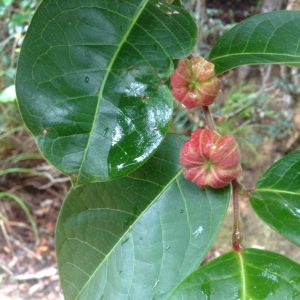
Wompoo Fruit-doves eat the fruit of Glochidion hylandii while other species of Glochidion attract a variety of birds such as Double-eyed Fig-parrots, Victoria’s Riflebirds, Silvereyes, Riflebirds and Lewin’s Honey-eaters.
Take a walk around Paluma. You will see many of these small trees, particularly among the vegetation on the road verges at either end of the village and along the Loop Road.

Article & Photos by Colwyn Campbell






Paluma residents and visitors are advised that there will be heavy vehicles using the Range Road in the week beginning 26 November.
The heavy vehicles will include gravel trucks, concrete trucks and other large transport vehicles. The vehicles will be travelling to Gumburu to carry out work on extending the bus turnaround area.
Heavy vehicles are most likely to be encountered in the early morning.
Please drive carefully and be alert for these large vehicles on the road this week.

 Paluma Mobile Tower – Launch Celebration
Paluma Mobile Tower – Launch CelebrationTelstra (Regional Australia, North Qld) and the Paluma & District Community Association (PDCA) invites all Paluma residents to attend a Morning Tea to celebrate the launch of the new Paluma Mobile Telephone Tower.
When: Saturday 1st December 2018, 10.30 AM
Where: Rainforest Inn, Paluma
Morning Tea will be provided courtesy of Telstra.
The PDCA encourages the attendance of Paluma residents, so please pass the word about this upcoming event!
